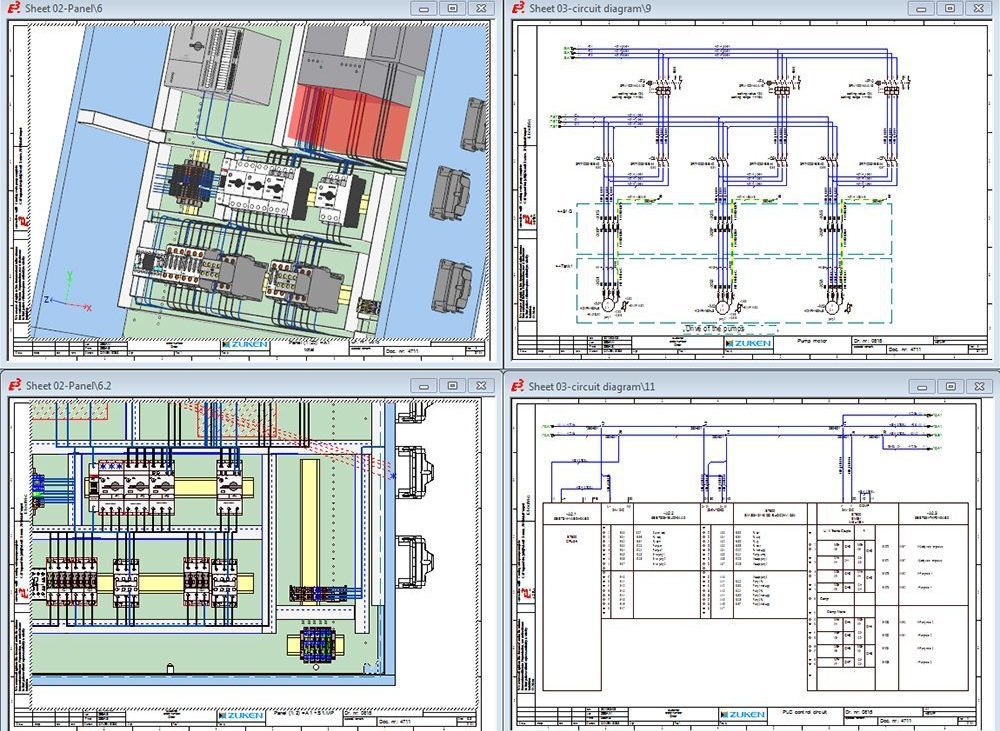Innovative Electric Design Services for Modern Facilities
As urban settings expand increasingly complicated, incorporating innovations such as wise grids and renewable energy sources ends up being vital. These improvements not only guarantee to optimize energy usage however additionally foster durability versus future demands.
Value of Innovative Electric Design
Cutting-edge electric design plays a vital duty in contemporary facilities, affecting not only efficiency but additionally sustainability. As cities evolve and the demand for power rises, the demand for sophisticated electric systems ends up being paramount. These systems must not just satisfy present demands but additionally prepare for future growth and technical improvements.
A well-executed electric design can substantially reduce power usage, thereby decreasing operational costs and reducing ecological impact. By integrating eco-friendly power resources, such as photovoltaic panels and wind generators, ingenious designs can enhance power freedom and strength. Additionally, clever grid innovations enable real-time surveillance and management of power circulation, enhancing efficiency and lowering waste.
Safety and security is an additional vital aspect of electric design. Executing rigorous standards and sophisticated innovations can reduce threats related to electric failings, making certain a safe atmosphere for organizations and locals alike. Furthermore, innovative styles assist in versatility, allowing infrastructures to incorporate arising modern technologies effortlessly.
Key Fads in Electric Design
As the landscape of electric design remains to advance, a number of key patterns are shaping the future of the market. One substantial fad is the combination of smart innovation into electric systems. The expansion of the Net of Things (IoT) has actually made it possible for real-time surveillance and control of electrical gadgets, boosting efficiency and facilitating predictive maintenance.
Another pattern is the expanding emphasis on modular design. This technique enables for scalable and adaptable options, enabling facilities to adapt to changing requirements without comprehensive renovations. In addition, using sophisticated simulation devices and Building Details Modeling (BIM) is becoming significantly widespread, improving the design procedure and boosting cooperation among stakeholders.
Additionally, improvements in materials science are resulting in the advancement of lighter, more long lasting, and energy-efficient components. This advancement is especially vital for high-performance structures and infrastructure projects.
Finally, there is a significant change towards data-driven decision-making - industrial electrical design. Leveraging data analytics assists developers optimize systems for performance and cost-effectiveness. With each other, these patterns signify a transformative era in electrical design, improving performance, sustainability, and resilience in contemporary framework
Sustainable Power Solutions
Lasting power services are significantly coming to be a crucial focus in electric design, mirroring a wider dedication to environmental responsibility and resource effectiveness. These options intend to lessen environmental impact while maximizing power usage in numerous infrastructures, from domestic structures to big commercial centers.
Among the foremost strategies entails the integration of renewable resource sources, such as solar panels and wind generators, right into electric systems. This not only lowers dependence on nonrenewable fuel sources yet additionally enhances energy resilience. Additionally, innovative energy storage systems, such as innovative batteries, enable effective monitoring and circulation of power, ensuring that surplus power produced throughout optimal manufacturing can be used throughout high need periods.
Furthermore, energy-efficient design methods are being taken on to enhance general system performance. This consists of using energy-efficient lighting, cooling and heating systems, and clever building innovations that adjust and monitor energy use based on tenancy and environmental conditions.
Smart Grid Technologies
The application of lasting energy remedies naturally leads to the expedition of smart grid modern technologies, which play a critical role in modernizing electrical systems. see this page Smart grids utilize progressed communication technologies and information analytics to enhance the integrity, performance, and sustainability of power circulation. By incorporating electronic technology with traditional grid framework, these systems help with real-time tracking, automated control, and improved decision-making capabilities.
Among the these details vital attributes of wise grids is their capability to suit sustainable energy resources, such as solar and wind power. This adaptability not only decreases dependency on fossil gas however also permits an extra decentralized energy manufacturing design. Furthermore, wise grids make it possible for demand action programs, where customers can readjust their energy usage based upon real-time rates, consequently advertising energy conservation and minimizing peak load demands.
In addition, smart grid technologies improve grid resilience by making it possible for quicker identification and resolution of blackouts, inevitably minimizing downtime. With anticipating maintenance and analytics, utilities can improve and enhance procedures service shipment. As areas and cities remain to evolve, smart grid technologies are essential for developing a lasting and effective electric infrastructure that satisfies the needs of modern society.

Future-Proofing Framework
To make sure lasting practicality and flexibility, future-proofing infrastructure is essential in the quickly developing landscape of electric design solutions. As modern technology breakthroughs and energy demands shift, it is critical that electric systems are developed with adaptability in mind. This involves integrating scalable options that can fit future upgrades without demanding substantial overhauls.

In addition, sustainability must be a keystone of future-proofed styles. Making use of sustainable energy resources, such as solar and wind, and optimizing energy performance minimize dependence on nonrenewable fuel sources, aligning with international efforts to battle environment adjustment.
Conclusion
By focusing on sustainability, efficiency, and flexibility, these solutions attend to the advancing demands of power systems. The combination of smart grid innovations and lasting power options improves strength and lowers functional expenses.
A well-executed electrical design can dramatically decrease power usage, therefore lowering operational expenses and lessening environmental impact. By incorporating renewable energy sources, such as solar panels and wind turbines, innovative styles can enhance power freedom and durability. Additionally, innovative power storage space systems, such as sophisticated batteries, allow effective monitoring and distribution of power, guaranteeing that surplus power produced throughout height manufacturing can be utilized during high demand durations.
Clever grids allow demand feedback programs, where consumers can adjust their power usage based on real-time pricing, therefore advertising energy preservation and lowering peak load needs. (residential electrical design)
As technology advancements and energy demands change, it is essential that electric systems are created with adaptability in mind.